610 Search Results for visual support
November 17, 2012
by Carole Zangari -
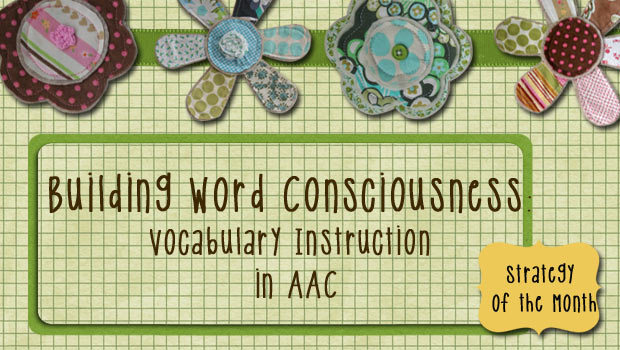
The mind is not a vessel to be filled but a fire to be kindled. Plutarch Last week, Robin discussed some strategies and activities for teaching new words to individuals who are at the earlier stages of language learning. This week, we move ahead and address semantic instruction for individuals who regularly create sentences to express themselves. One of my favorite things about working with AAC learners at this level is the opportunity for having metalinguistic conversations. Getting them to think and talk about language can accelerate their learning. Here are some prAACtical thoughts on how this relates to semantics with a focus on building word consciousness. We’re all familiar with music appreciation and art appreciation. I always think of word consciousness as a sort of like word appreciation. It refers to an awareness that words are the building blocks of language and that they can be examined and manipulated... [Read More...]
November 7, 2012
by Carole Zangari -
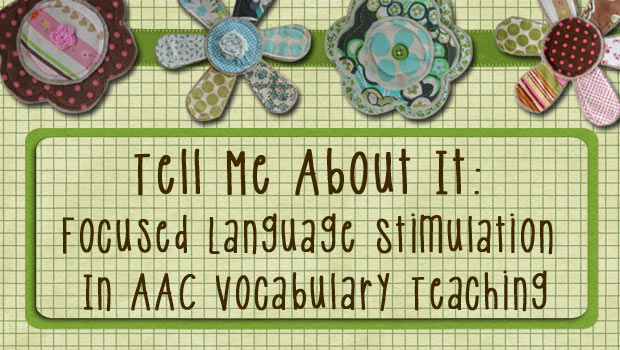
Earlier this month, we introduced a general sequence of how we conceptualize semantic instruction. We promised to elaborate on that. There are two things that I really love about this approach to to vocabulary teaching. The first is that is honors a principle that we know to be true: providing repetition with variety not only helps us reach learners with different strengths, but also gives our AAC learners much-needed practice. The other thing that makes this really work for us is that assessment has an active role but not a central one. Testing takes a backseat to teaching. As we all know, getting accurate assessment information from people who are learning their AAC systems is a huge challenge. Often, our AAC friends don’t have decent test-taking skills so we’re not really testing what we think we’re testing. Just last week I got to see Kristofer, an adorable little fellow who... [Read More...]
November 5, 2012
by Robin Parker -
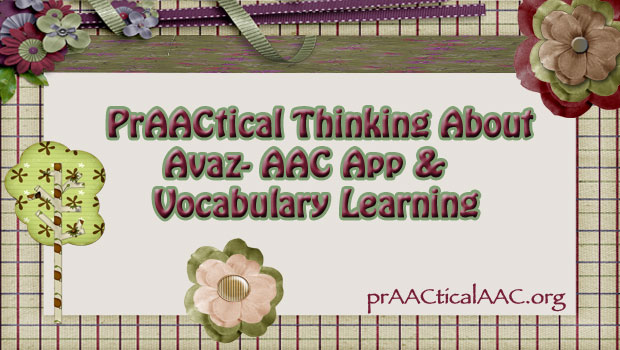
We originally talked about Avaz, the first commercially available AAC app developed in India, back when we introduced PrAACtical AAC in January of 2012. At that time, one of the primary developers, Ajit Narayanan, was recognized by the MIT Technology Review through the prestigious TR35 List, which applauds 35 innovators under 35 years of age. We were congratulating the team at Invention Labs and thinking that they would continue to improve communication for individuals with disabilities throughout 2012. They have succeeded. The Avaz team has worked this year seeking feedback from AAC professionals throughout the world. They have listened and have made many updates to improve the communication and language options of the Avaz App. We thought this was a great time for some follow-up information because many of the modifications and added options relate to vocabulary, which just happens to be our strategy of the month. Pre-loaded vocabulary has... [Read More...]
October 15, 2012
by Robin Parker -
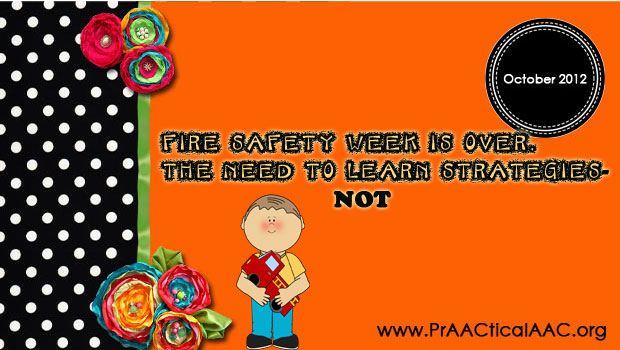
Fire Safety Week is over now but the need to learn fire safety strategies is NOT. If you missed these great fire safety resources, here they are to help you prepare for an fire emergency The 3 P’s to Keep Your Kid Safe During an Emergency Sensory Breaks & Learning Activities Firefighters are being Educated in Auburn On-Line Fire Safety Games for Kids How To Teach and Present Information, Lesson Plans, and Visual Supports for children and adults with Intellectual Disabilities For Teachers and SLPS Fire Rescue– an app for children that teaches the basics of fire safety through games, mazes, puzzles, matching, and more Apples 4 Teacher- kids fire prevention activities and information
October 8, 2012
by Robin Parker -
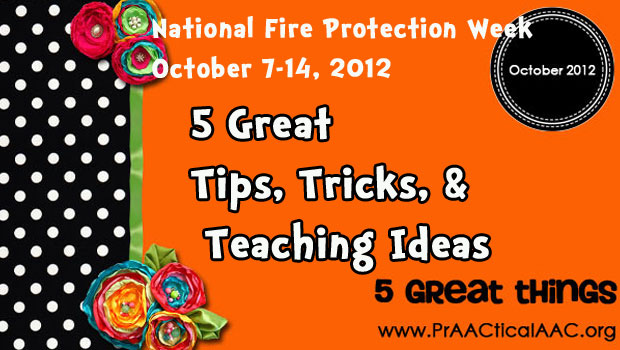
It is National Fire Protection Week October 7-13, 2012. Check Out These 5 Great Tips, Tricks, and Teaching Ideas: Sensory Breaks & Learning Activities Firefighters are being Educated in Auburn On-Line Fire Safety Games for Kids How To Teach and Present Information, Lesson Plans, and Visual Supports for children and adults with Intellectual Disabilities For Teachers and SLPS
September 16, 2012
by Carole Zangari -
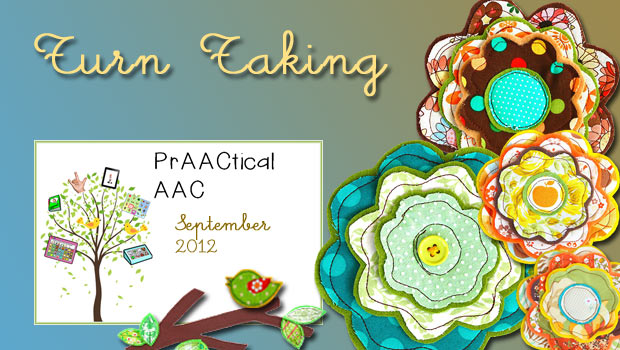
We’re always looking for new ways to represent things visually. Today, we’re sharing an idea from Amy Laurent on helping children take turns. You can view a video explaining the strategy she uses and download the visual support here.
September 5, 2012
by Robin Parker -
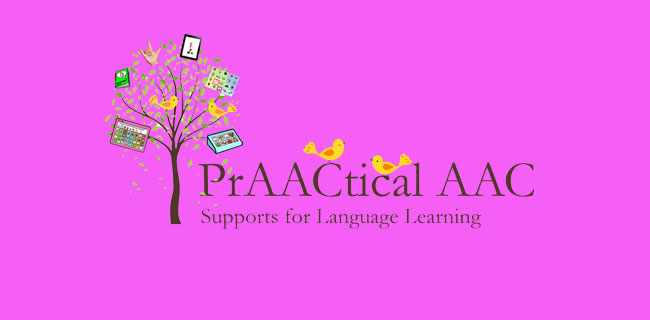
AAC Supports- Don’t Go ANYWHERE Without Them.. Access To AAC & Visual Supports Allows Students to: Let you know what they want Let you know nicely what they don’t want Answer class questions Ask a question Say ‘I don’t know’ Ask for help Tell you they are having fun Create a Sentence Argue Negotiate Say a line in a school play Say ‘here’ during attendance Tell what they did on the weekend Tell what they did over the summer Tell you what they want to do at home Tell you if they are happy Tell you if they are scared Tell you if they are frustrated Tell you about their family Tell you about their pets Say please Say their name Say hello to a person Tell you what they like to do Ask for more Tell you which color they want Ask for a break Tell you why they are... [Read More...]
September 2, 2012
by Robin Parker -

We have recently been surprised (ok, shocked) by the absence of communication supports in educational settings that are supposed to be supporting learners with significant communication challenges. To be even more specific and blunt, the students do not have functional spoken speech. They can’t speak to let you know: what they need, what they don’t need or want, how they feel, what they see, what interests them, what questions they have, what they like and don’t like, when they really reallywant something, etc., etc. etc. And, trust us, they do need to say all of these things. If you work with anyone who does not use spoken speech and we mean ANYONE, they deserve the basic right to communicate with you. Our PrAACtical AAC Absolute A’s: AAC displays need to be accessible ALLOVER. There is no special ‘communication time.’ Communication teaching is ALL the time in authentic situations.... [Read More...]
August 27, 2012
by Carole Zangari -

“How was school?” (Good) “What did you do?” (Nothing) This scenario plays out in many cars and kitchens in the after school hours and it can be hard to know who is more frustrated: the kids for being asked or the parents for not getting satisfactory answers. And still, we repeat the process day after day. Of course, we want to know the fine details of what happened and how our children felt, but in some cases, we’d settle for ANY school-related conversation at all. I’ll be the first to admit that it took me way too long to get the hang of how to get information about my children’s school days, and it seemed like just when I did, pow! They were pre-teens and then teenagers. New rule book. Here are some ‘lessons learned’ along the way about those afterschool conversations and some suggestions for parents of the kids... [Read More...]
August 25, 2012
by Robin Parker -

We live in Florida and there are lots of general summer storms. They can be very loud and dark. There are also many hurricane warnings (like now for Hurricane Isaac). Many children and adults with communication challenges can become upset or anxious because of the loud noises, the change in routines, and/or the heightened state of anxiety that is usually around the house or community. Because of this we are often asked to help find visual support resources. Here are some great prepared visual support stories and resources that we use: Bad Weather Tips and Story by Hands in Autism Hurricane Preparedness More Hurricane Preparedness Thunder/Lightning Storms Thunder Box Sometimes though the prepared supports do not meet the needs for specific learners. Here are our tips for developing your own storm visual supports and resources Creating Personal Participation Stories Use language of the story that is at the... [Read More...]









